You are using an out of date browser. It may not display this or other websites correctly.
You should upgrade or use an alternative browser.
You should upgrade or use an alternative browser.
Knife forging questions....
- Thread starter firestick
- Start date

Help Support Muzzleloading Forum:
This site may earn a commission from merchant affiliate
links, including eBay, Amazon, and others.
firestick
40 Cal
You might take a look at iforgeiron.com whole sections on forges,anvils, metallurgy, blacksmithing and knife making. Some very knowledge folks there and yes they take things seriously.
firestick
40 Cal
I will be happy to read threads and collect useful information from that site. Sadly I join and participate in very FEW forums anymore. Too much arguing over insignificant things (like Damascus steel) and far too many "experts" out there. I think this way because I was a carpenter for 20 years and found there are many, many ways to get a job or project done that in the end turn out of equal qualiy. Many factors go in to it all. Too old and too burnt up to get serious over beating iron like it was my ex mother in law (that's a joke fellas). I just plan on being safe and having some fun. Hopefully enough to take a pic and share it with a few folks!You might take a look at iforgeiron.com whole sections on forges,anvils, metallurgy, blacksmithing and knife making. Some very knowledge folks there and yes they take things seriously.
John R
32 Cal
I agree with firestick. The site mentioned is very condescending and operates as if admin staff and senior members are in a snobbish country club. I gave up on the site several months ago, logged out, and deleted the bookmark.
Use anything you want when learning the basics of forging, then when you are ready to make nice knives move up to good alloys.
A few photos below, I will take more when I am in the shop later today.
Patterns, ground blades and completed skinners. The knife in bottom center was forged from 1095 flat stock. Others were ground from L-6 band mill blades. The band mill blades are huge things used in sawmills, the L-6 I have is about 10 inches in width, 3/16 thick, and the endless loop of blade is around 60 feet long. I obtained several hundred pounds way back in the dark ages when I worked in a sawmill.
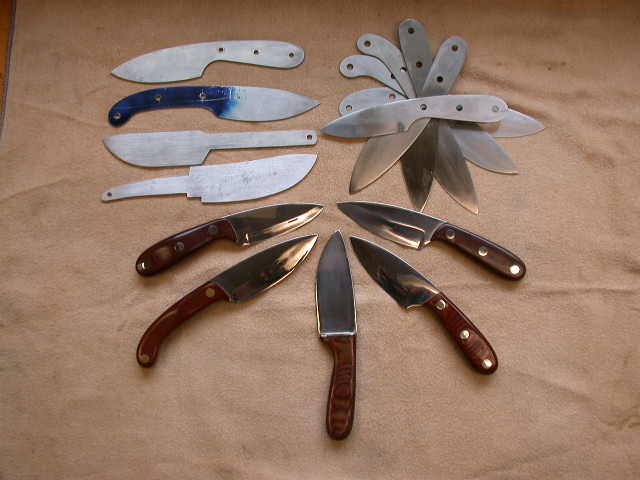
Ground blade, L-6 steel
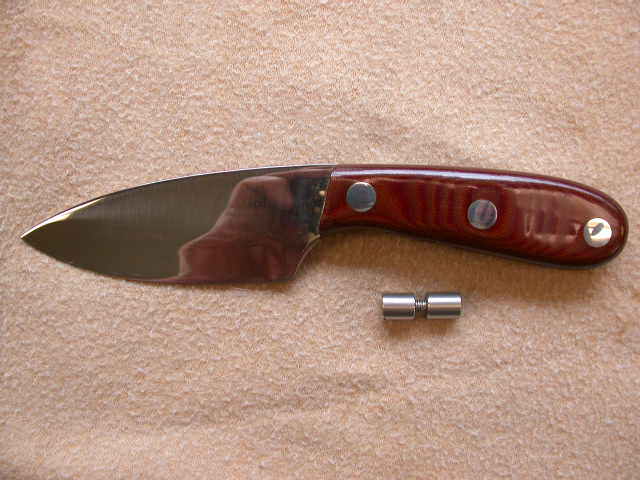
My first anvil, it is the bottom anvil from a junked steam hammer. About 250 pounds. A good flat anvil for forging knife blades.
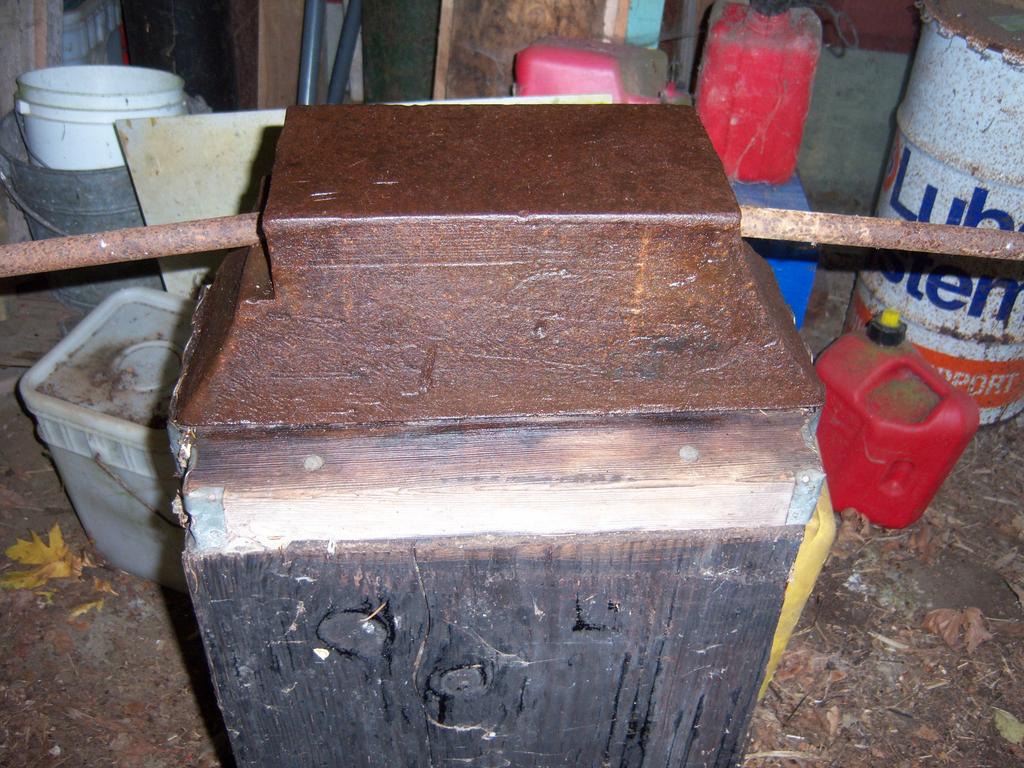
The bars are stuck into holes for moving the anvil: a two man job.
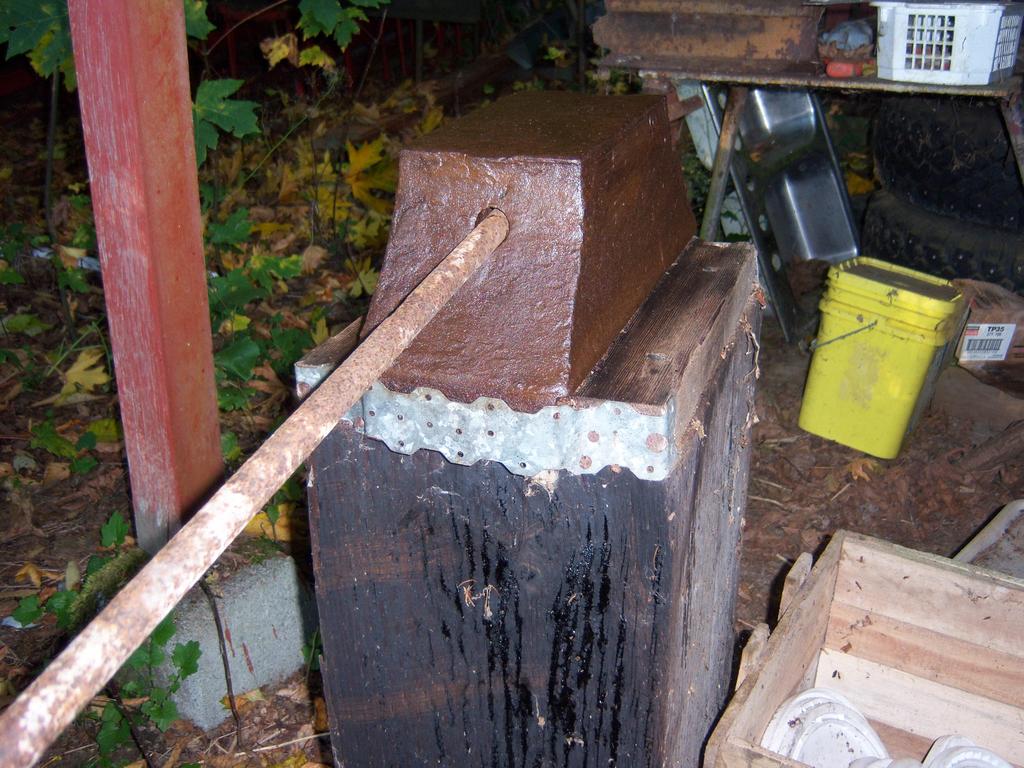
This is a 196 pound Soderfos, made in Sweden in 1929. An excellent anvil, made of cast steel. The face is heat treated. Bounce test is nearly 100 per cent.
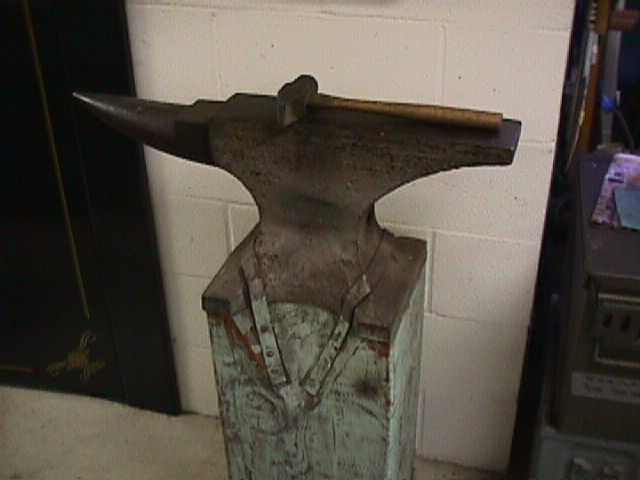
A little 100 pound Vulcan. Cast iron with a steel top face. OK for general use but not a fine bladsmithing anvil.
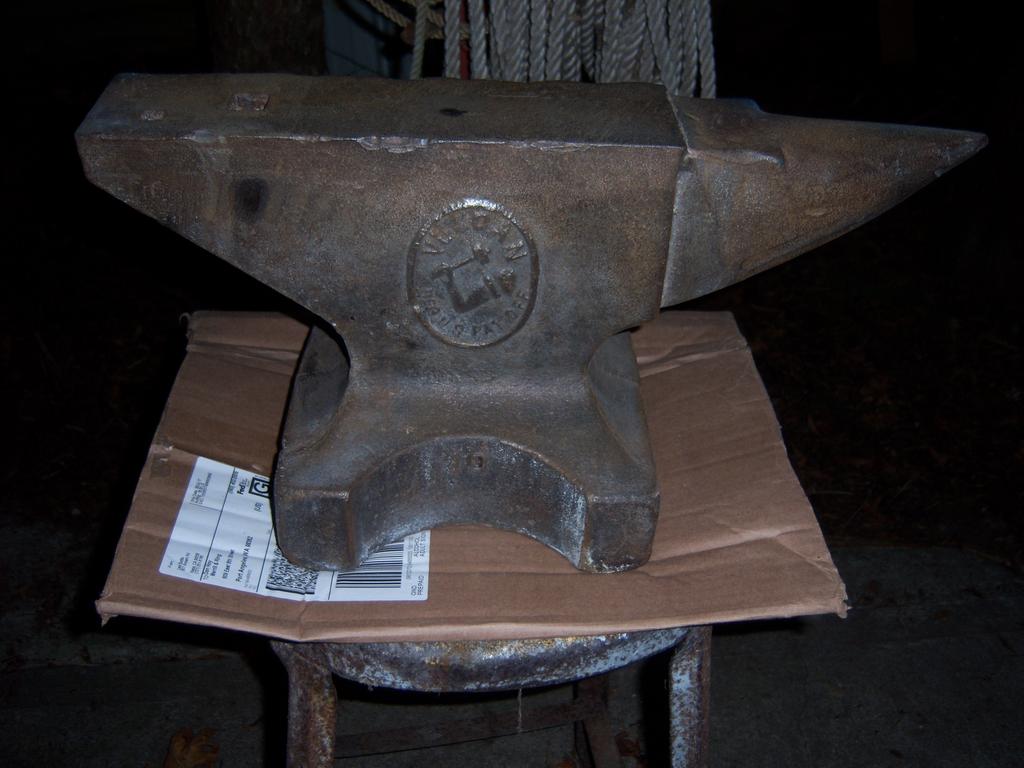
My 150 pound Star, made in Trenton, NJ, about 1855. It has been in my family since the Civil War.
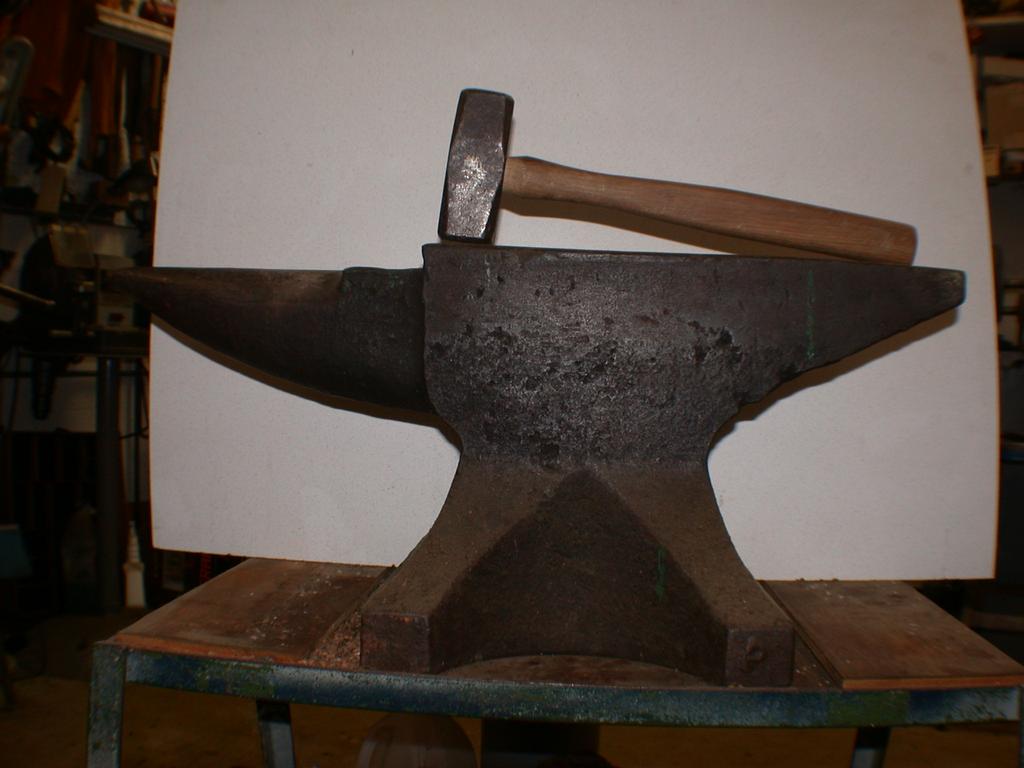
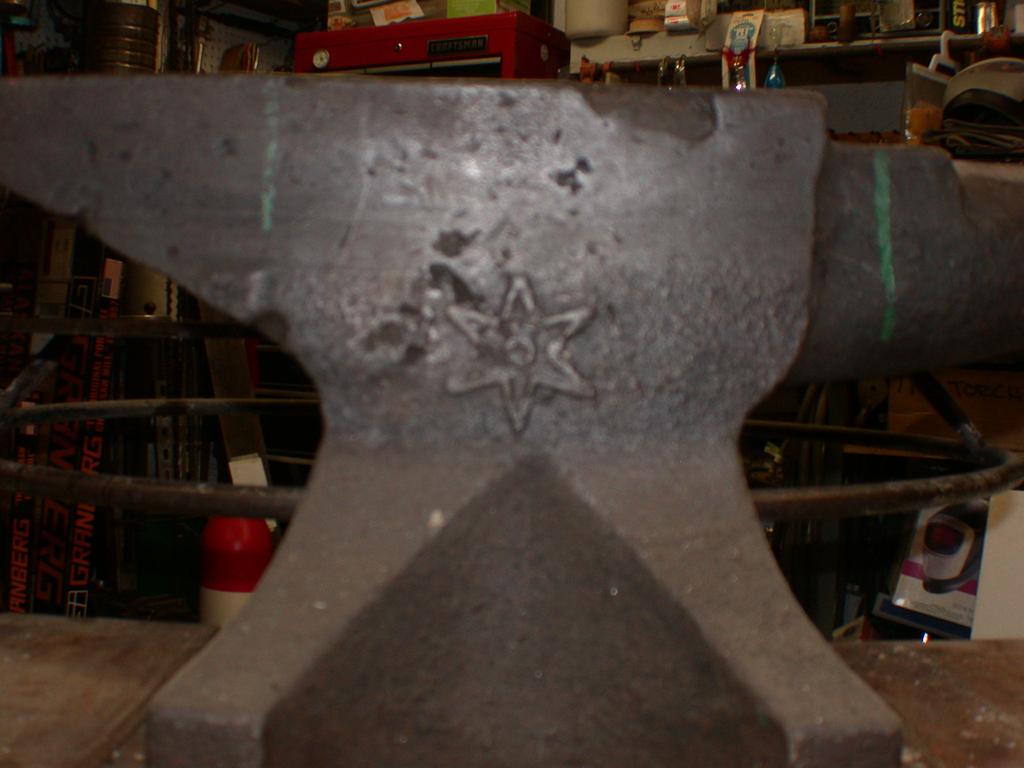
My black smithing tools are in disarray now, but there is hope, as I am building a new blacksmith shop adjacent to the main shop. Looking forward to having everything in its place and set up for immediate use.
The L-6 Bandmill blade. Makes excellent knives.
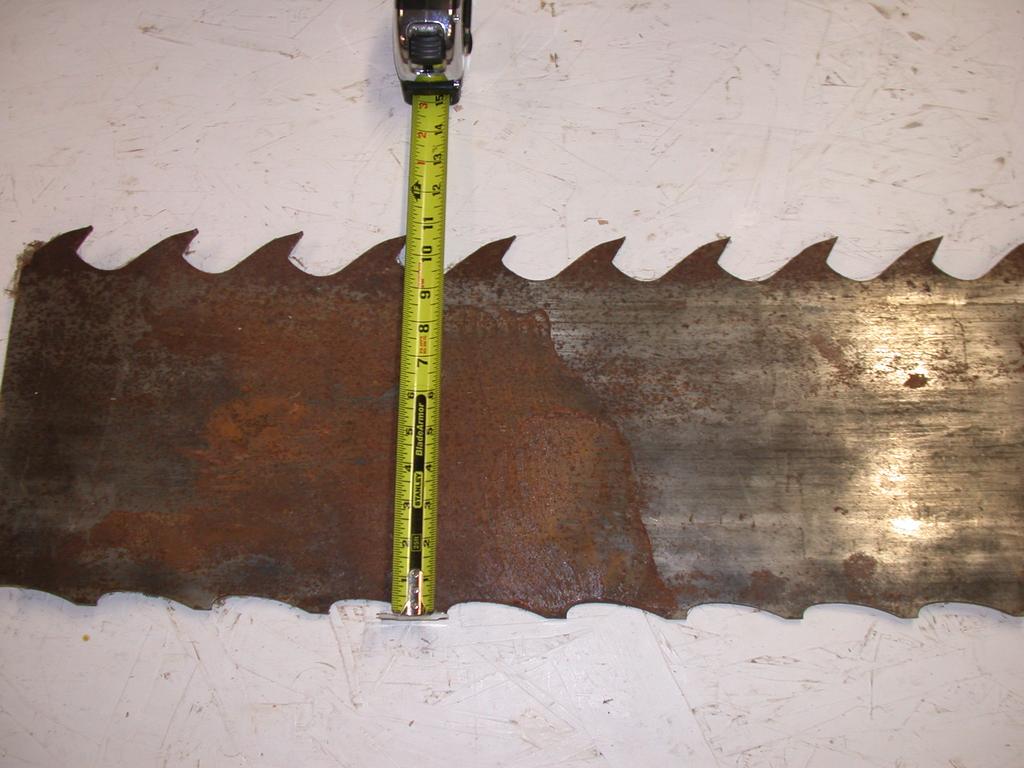
A forged blade from 1095 steel. The top and bottom steel bars are the 1095 I use for forging. About 3/8" thick by 1" wide. They are wear bars from a big expeller screw press used in a pulp and paper mill. I scored about 600 pounds of this stuff a long time ago after we rebuilt the press. Excellent forging stock, heat treats well and results in an excellent blade. Scrounged for free, a prize. So you can find good steel for free if you know where to look.
The rod is welded on for use as a handle, better than tongs. Cut off after forging is complete.
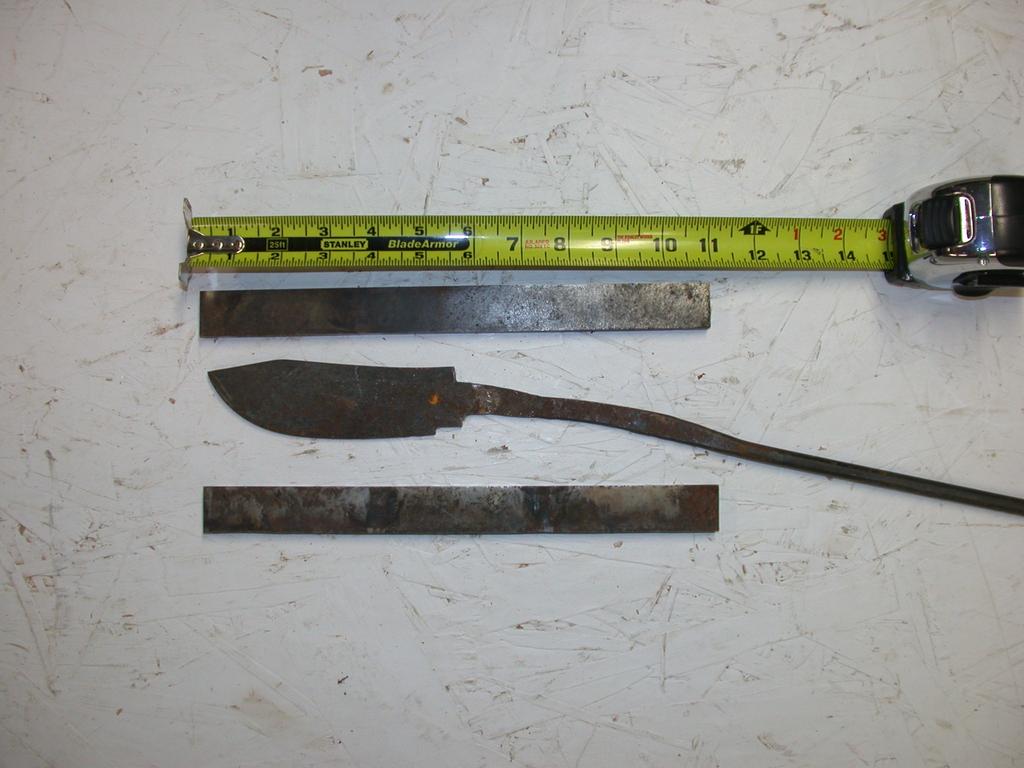
Use anything you want when learning the basics of forging, then when you are ready to make nice knives move up to good alloys.
A few photos below, I will take more when I am in the shop later today.
Patterns, ground blades and completed skinners. The knife in bottom center was forged from 1095 flat stock. Others were ground from L-6 band mill blades. The band mill blades are huge things used in sawmills, the L-6 I have is about 10 inches in width, 3/16 thick, and the endless loop of blade is around 60 feet long. I obtained several hundred pounds way back in the dark ages when I worked in a sawmill.

Ground blade, L-6 steel

My first anvil, it is the bottom anvil from a junked steam hammer. About 250 pounds. A good flat anvil for forging knife blades.

The bars are stuck into holes for moving the anvil: a two man job.

This is a 196 pound Soderfos, made in Sweden in 1929. An excellent anvil, made of cast steel. The face is heat treated. Bounce test is nearly 100 per cent.

A little 100 pound Vulcan. Cast iron with a steel top face. OK for general use but not a fine bladsmithing anvil.

My 150 pound Star, made in Trenton, NJ, about 1855. It has been in my family since the Civil War.


My black smithing tools are in disarray now, but there is hope, as I am building a new blacksmith shop adjacent to the main shop. Looking forward to having everything in its place and set up for immediate use.
The L-6 Bandmill blade. Makes excellent knives.

A forged blade from 1095 steel. The top and bottom steel bars are the 1095 I use for forging. About 3/8" thick by 1" wide. They are wear bars from a big expeller screw press used in a pulp and paper mill. I scored about 600 pounds of this stuff a long time ago after we rebuilt the press. Excellent forging stock, heat treats well and results in an excellent blade. Scrounged for free, a prize. So you can find good steel for free if you know where to look.
The rod is welded on for use as a handle, better than tongs. Cut off after forging is complete.

Last edited:
John R
32 Cal
Go here https://www.youtube.com/user/bushchannel/playlists?disable_polymer=1
Then look at the individual videos and pay attention. You will see scores of different methods and improvised anvils and many different materials for forging blades. Most third world black smiths use leaf springs for forging material.
Check out the videos that pop up on the side bar also.
Then look at the individual videos and pay attention. You will see scores of different methods and improvised anvils and many different materials for forging blades. Most third world black smiths use leaf springs for forging material.
Check out the videos that pop up on the side bar also.
John R
32 Cal
Bits & pieces from the knife steel box. The cut strips on top are the L-6 Band Mill steel. And a couple of pieces leaning in the background.
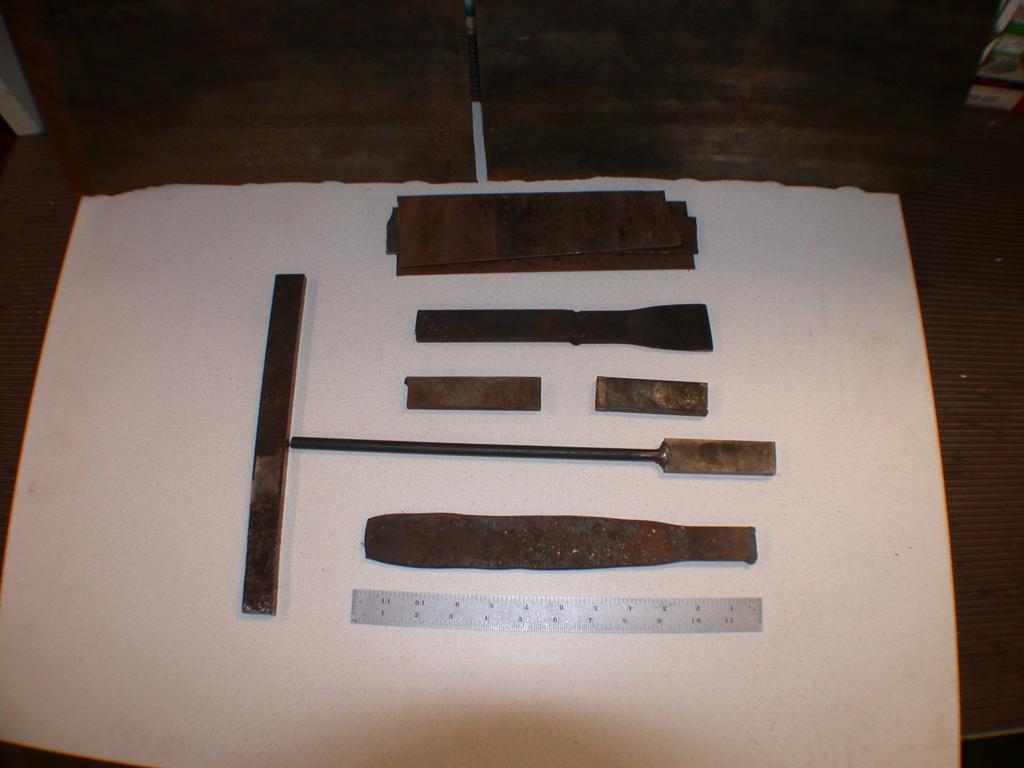
One of the boxes of the 1095. Lots of possibilities here. Maybe some creative pattern welding with the L-6 Band Mill steel. A couple hundred in this box. Lot of weight here, I cannot pick the box up.
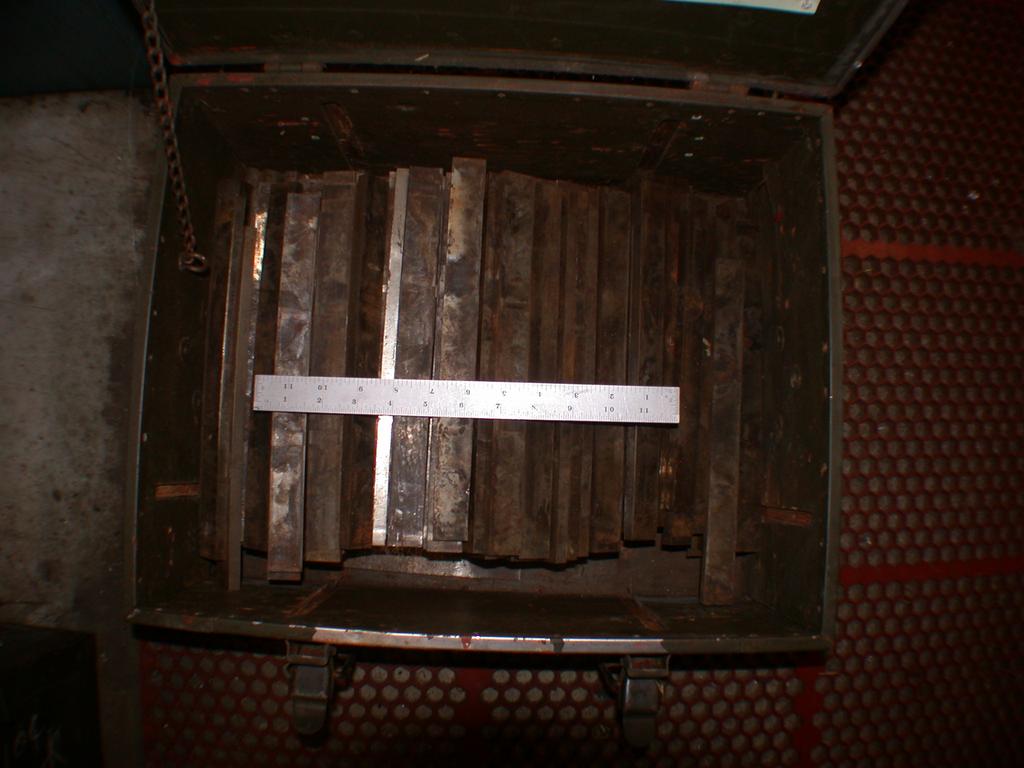
My point in this post is never stop looking for good steel, there is a lot out in the world you just gotta have a good network to find it.

One of the boxes of the 1095. Lots of possibilities here. Maybe some creative pattern welding with the L-6 Band Mill steel. A couple hundred in this box. Lot of weight here, I cannot pick the box up.

My point in this post is never stop looking for good steel, there is a lot out in the world you just gotta have a good network to find it.
Last edited:
I find the exact opposite. It's refreshing to me to go on a site and not have to read all the bickering, cursing, backstabbing, etc. The moderators have a very hard job, like herding cats. There are definite rules that most members adhere to, those that don't will be called on it and usually don't last long there.The site mentioned is very condescending and operates as if admin staff and senior members are in a snobbish country club.
firestick
40 Cal
I think he is more or less referring to attitudes. An example might be using a scrap metals to learn to make a knife. Go to blacksmithing sights or especially sights where they deal with bladesmithing and they ALWAYS will tell you NO WAY. Now it makes little sense to my way of thinking to waste a perfectly good bar of 1095 to learn hammer strikes, shaping techniques and heat temps when scrap accomplishes the same thing. I don't believe it is a waste to do so. In fact I think it is a waste to use good stock to beat on when you are not actually making something. Kind of like telling a batter not to use a batting cage and only face live pitching. Let's not even get into tools!I find the exact opposite. It's refreshing to me to go on a site and not have to read all the bickering, cursing, backstabbing, etc. The moderators have a very hard job, like herding cats. There are definite rules that most members adhere to, those that don't will be called on it and usually don't last long there.
John R
32 Cal
Firestick is right on.
Learn how to run the coal in the forge, how to pound the steel to obtain the shapes you want, and a few things about heat treatment.
(I use a coal forge, cannot stand the noise of gas forges)
Then graduate to the better steels.
The site I referred too wants the newbie to start with primo steel, not a good idea. Not everyone on the site is this way, just enough of them to make me avoid the site.
Firestick, I will UPS some good steel to you if you wish I have about 10 lifetime supplies. Along with nice micarta for handles.
Big Horns meaning Wyoming?
Three favorite forging hammers, I have about 50.
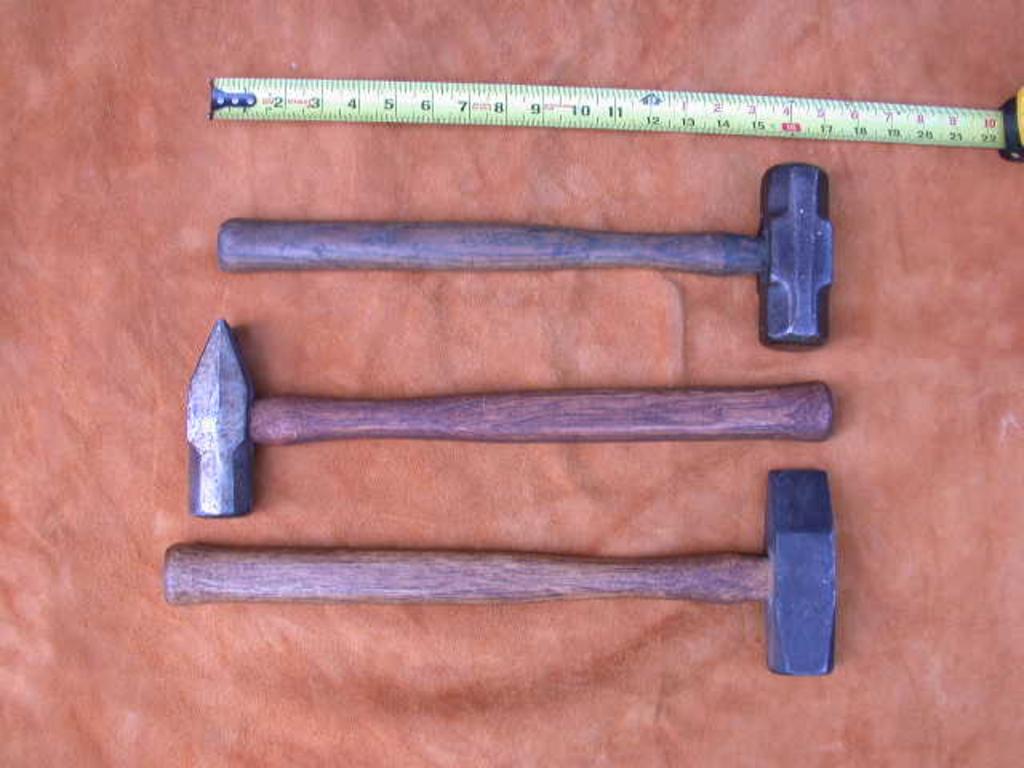
Note the thinned handle on the bottom one, top one is slightly thinned, center is not thinned. Thinning the handle fits it to your hand better and gives more control. Handles treated with boiled linseed oil. I polish the faces of the hammers.
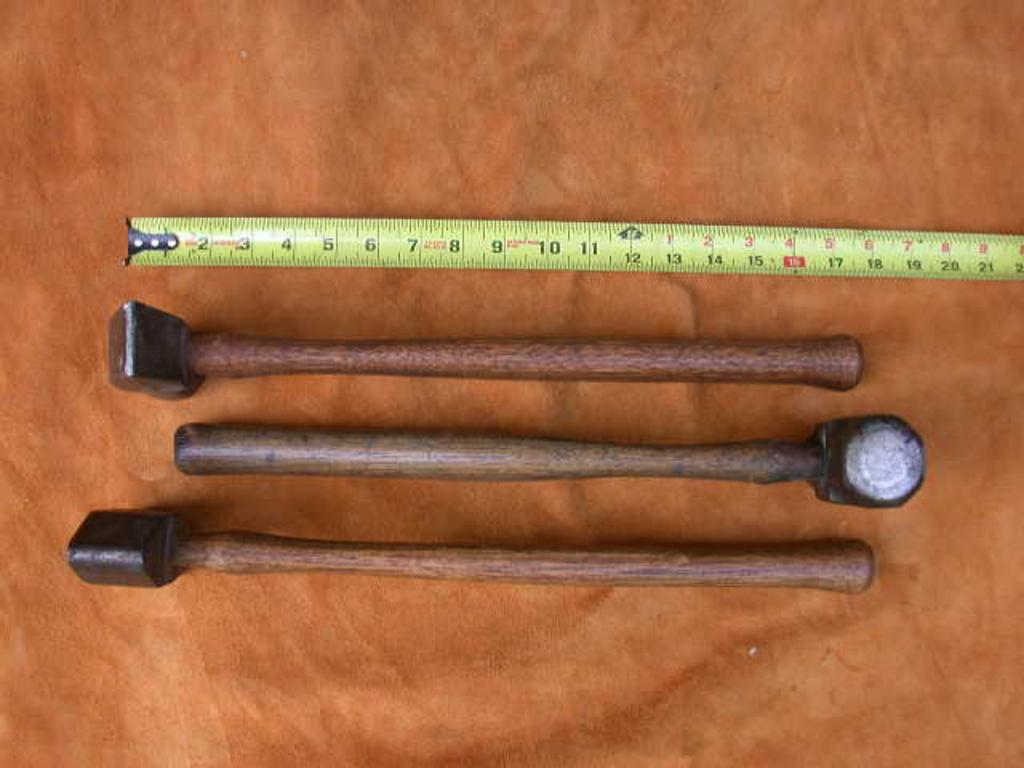
Learn how to run the coal in the forge, how to pound the steel to obtain the shapes you want, and a few things about heat treatment.
(I use a coal forge, cannot stand the noise of gas forges)
Then graduate to the better steels.
The site I referred too wants the newbie to start with primo steel, not a good idea. Not everyone on the site is this way, just enough of them to make me avoid the site.
Firestick, I will UPS some good steel to you if you wish I have about 10 lifetime supplies. Along with nice micarta for handles.
Big Horns meaning Wyoming?
Three favorite forging hammers, I have about 50.

Note the thinned handle on the bottom one, top one is slightly thinned, center is not thinned. Thinning the handle fits it to your hand better and gives more control. Handles treated with boiled linseed oil. I polish the faces of the hammers.

firestick
40 Cal
SWEET looking hammers. What do they weigh? My cross peen is 2# and my heavy hammer is just under 4#.
Bighorns as in Bighorn Mountains just outside of Sheridan Wyoming. Pretty young mountains that are still growing. I think they said about an inch per year. Interesting mountains to be sure.
John the offer of for the steel is most generous. Just message me where to send the postage to.
Bighorns as in Bighorn Mountains just outside of Sheridan Wyoming. Pretty young mountains that are still growing. I think they said about an inch per year. Interesting mountains to be sure.
John the offer of for the steel is most generous. Just message me where to send the postage to.
I belong to that forum. As a real neophite I try to peruse all of the forums that I can find on the subject. Hopefully I can pick out some some pearls and I avoid the arguments as I have no clue to which one is right. This may not be right for anyone else, but it works for me. This is how I started in muzzleloading and it saved me some aggravation.
John R
32 Cal
I belong to that forum. As a real neophite I try to peruse all of the forums that I can find on the subject. Hopefully I can pick out some some pearls and I avoid the arguments as I have no clue to which one is right. This may not be right for anyone else, but it works for me. This is how I started in muzzleloading and it saved me some aggravation.
I am not saying all are bad, just a few that muddle the works. I do not need to visit that forum as I am fairly knowledgeable of forging, welding, machining and other areas as I have worked in the industries since 1965. But there is a good deal of knowledge available for those that are new in the blacksmithing areas.
A good knife making site, mainly the forging techniques instead of grinding flat stock, is Bladesmithsforum. Excellent forging and pattern welding info. Read the old posts, I have learned a lot. A gent named Gary Mulkey is a period Bowie specialists and his creations are unbelievable. His pattern welding techniques are out of this world. He posts excellent tutorials, it is well worth your time to search his name and read his old posts.
John R
32 Cal
SWEET looking hammers. What do they weigh? My cross peen is 2# and my heavy hammer is just under 4#.
Bighorns as in Bighorn Mountains just outside of Sheridan Wyoming. Pretty young mountains that are still growing. I think they said about an inch per year. Interesting mountains to be sure.
John the offer of for the steel is most generous. Just message me where to send the postage to.
Little sledge on top is 4-1/2 pounds, cross peen is 3 pounds, straight peen is 3-1/2 pounds. I use the straight peen a lot, just the correct weight for forging without having to put a lot of energy into the swing.
The straight peen is pretty old, was with the civil war period anvil my father had, he said it came with the anvil way back when the ancestors purchased the anvil for the farm.

PM your address and I will box up some steel.
John R
32 Cal
Back to Bowies, the original Bowie knives as commissioned by both Jim Bowie and his brother Rezin, did not look anything like what passes for a Bowie today. The Bowie brothers had a lot of knives made, mainly as gifts to friends, politicians and important town folks. I have a book with a lot of photos, I will post the title later. If you are into Bowie knives and their making, a valuable resource. Gary Mulkey has reproduced several of the original Bowie knives, they look exactly like the originals.
John R
32 Cal
Umm big book, 445 pages, tons of good photographs. I bought it from Amazon.
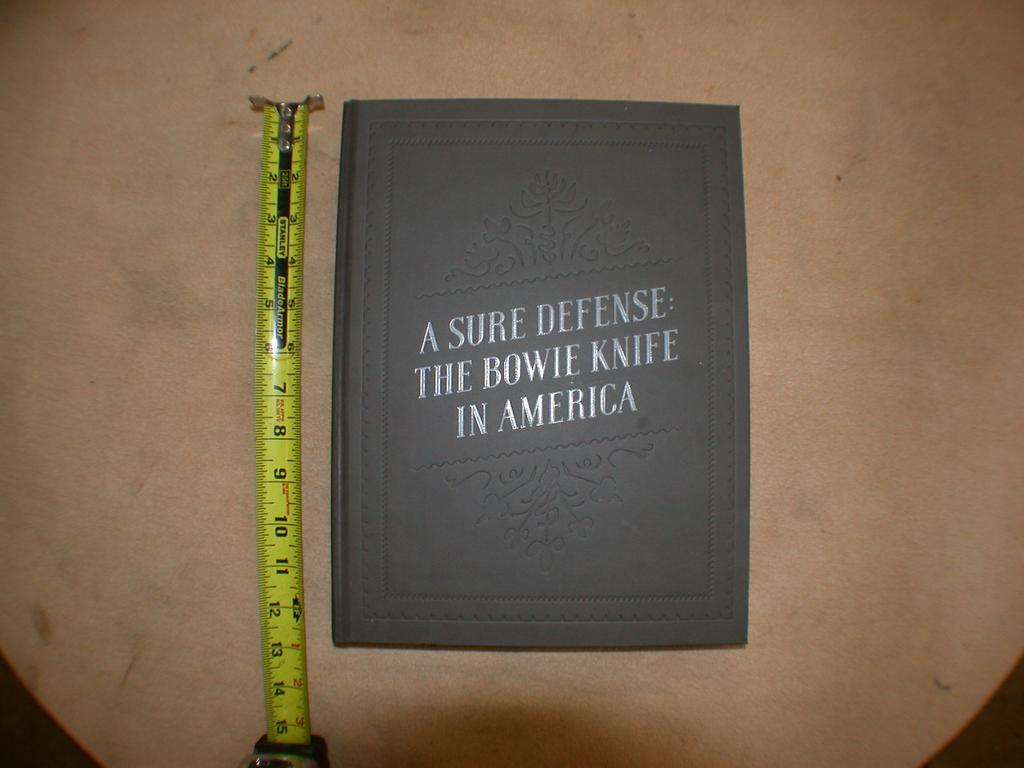
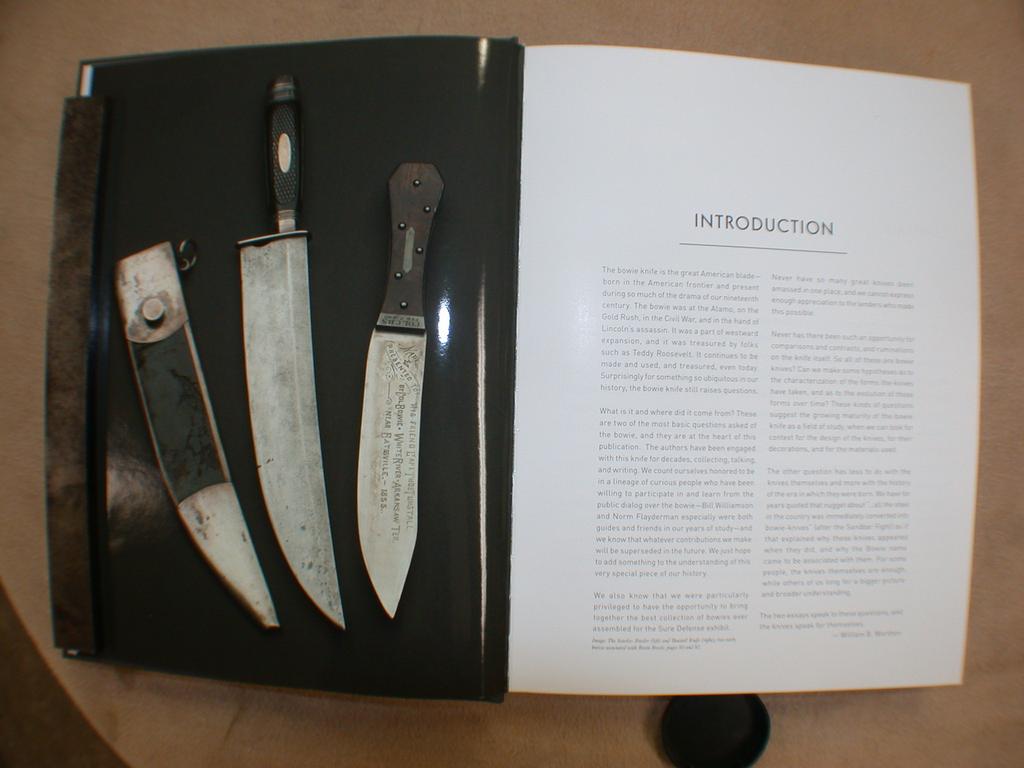
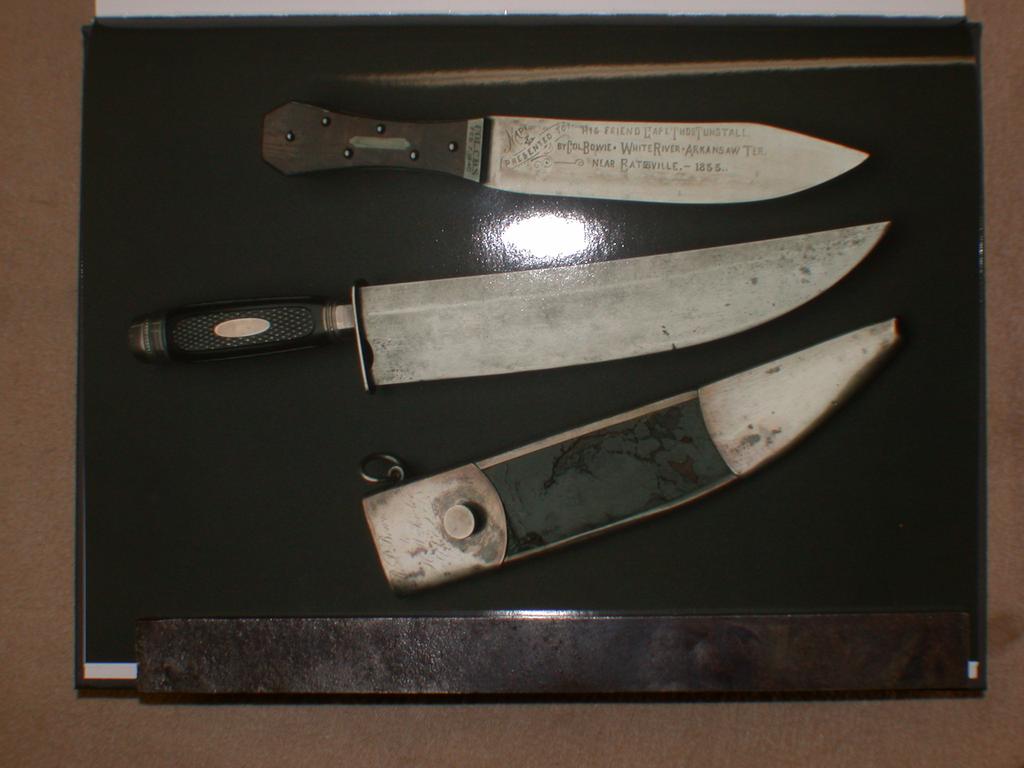
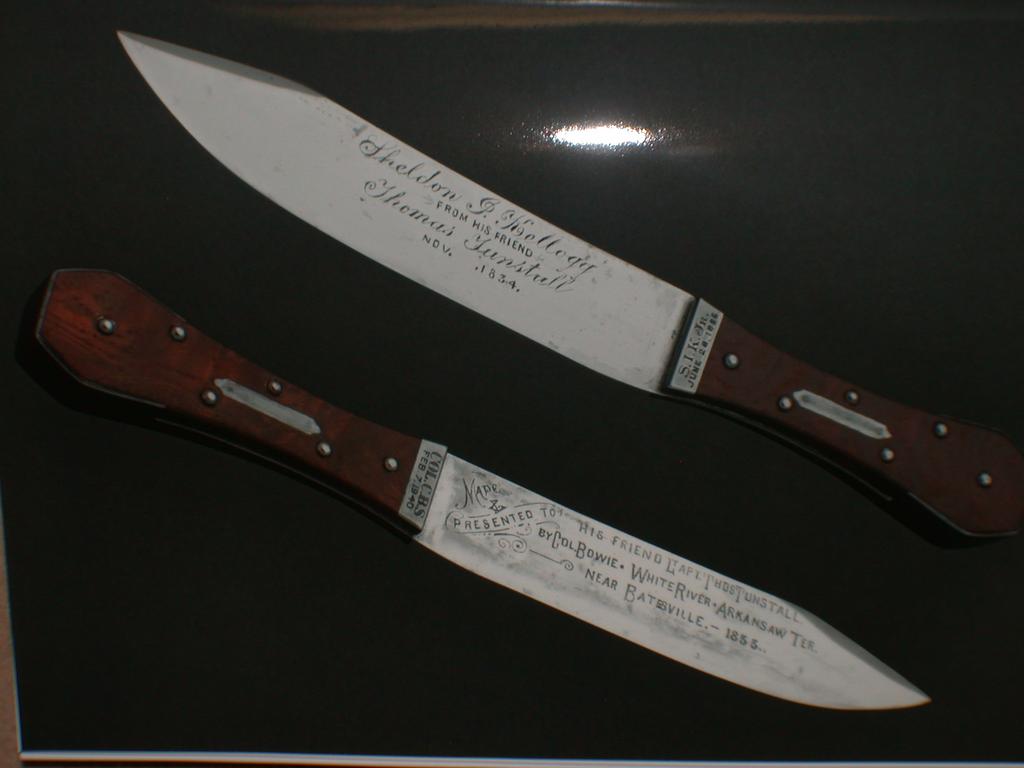
I think it is a reproduction from original drawings, note the date on the handle.
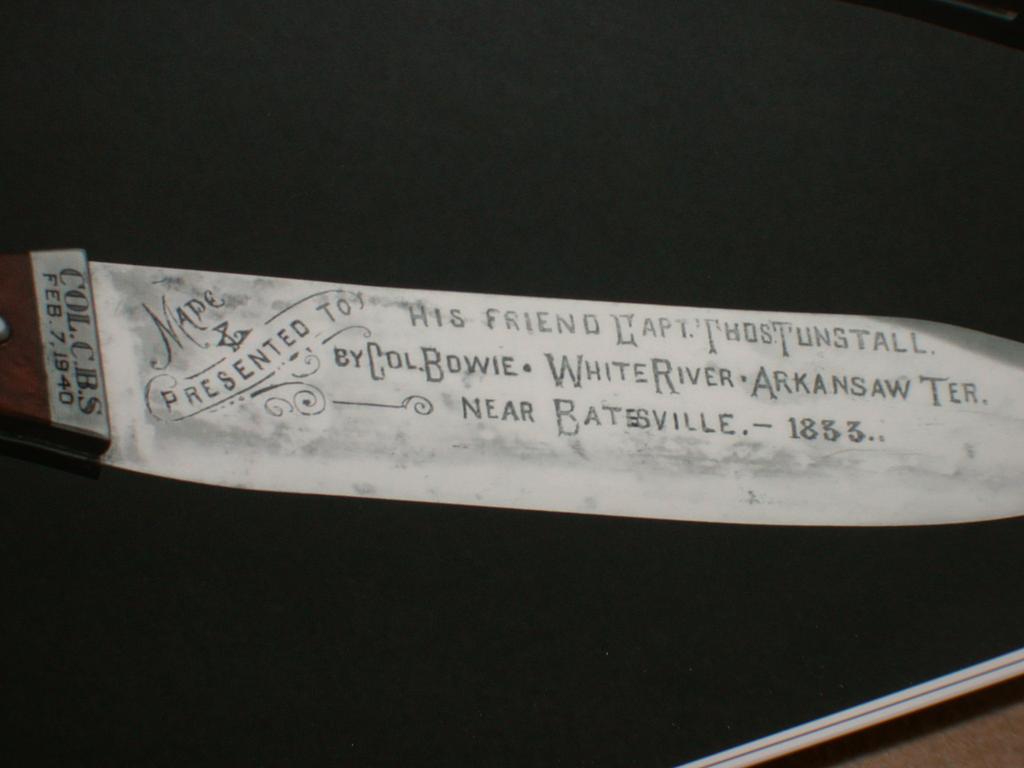
Now this one is either a copy or a duplicate made at the same time as the famous "Sandbar Bowie", the knife used by Jim Bowie in the famous fight on the riverbank when he was nearly killed.
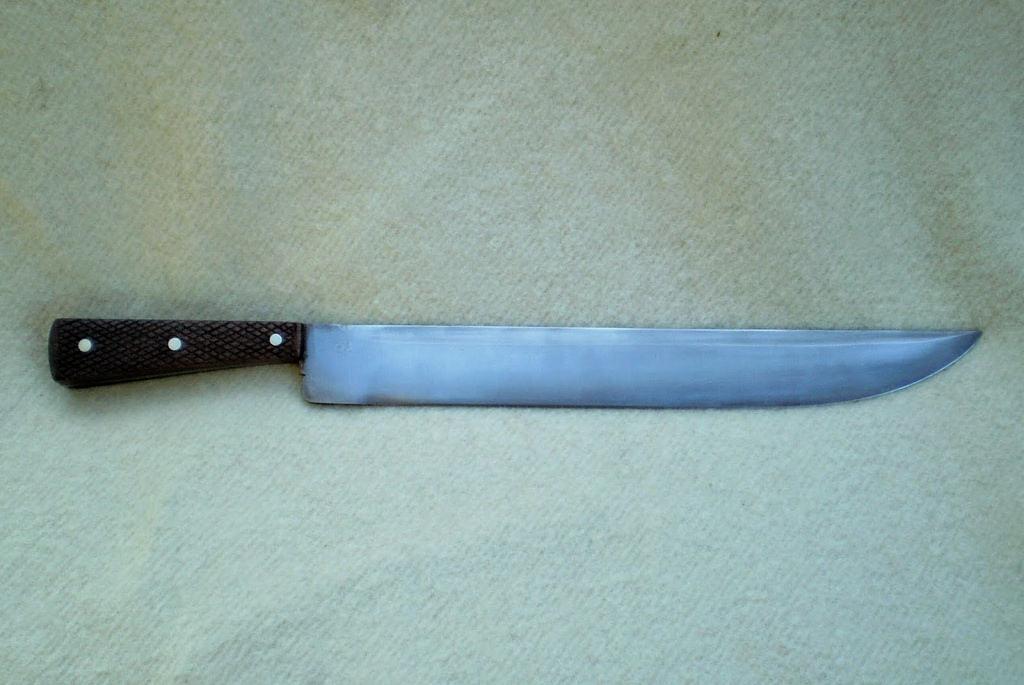
This is a later design by Jim Bowie. Note the "upside down handle". This knife was used in the knife fights, stab the offender in the gut and pull up to "Gut" the victim.
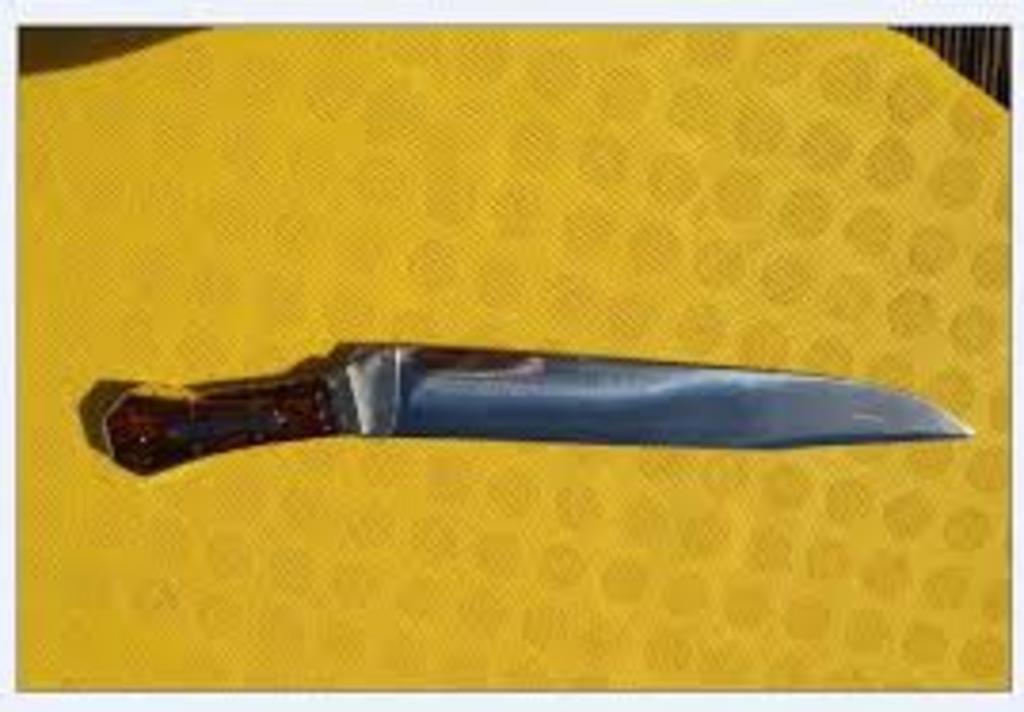
Why did the guys carry such big knives? Ah, the flintlock pistols they also carried had only one shot. Then they had to use the big knife as a backup weapon. Back the the early 1840's there were a lot of rough characters that would kill you as much as look at you, so you always had to be ready to defend yourself.




I think it is a reproduction from original drawings, note the date on the handle.

Now this one is either a copy or a duplicate made at the same time as the famous "Sandbar Bowie", the knife used by Jim Bowie in the famous fight on the riverbank when he was nearly killed.

This is a later design by Jim Bowie. Note the "upside down handle". This knife was used in the knife fights, stab the offender in the gut and pull up to "Gut" the victim.

Why did the guys carry such big knives? Ah, the flintlock pistols they also carried had only one shot. Then they had to use the big knife as a backup weapon. Back the the early 1840's there were a lot of rough characters that would kill you as much as look at you, so you always had to be ready to defend yourself.
firestick
40 Cal
John R- I love that you have history to those hammers. Makes them even better tools!
Gentlemen, This is just an FYI. The photos in the above mentioned book are of original historic knives, including the Tunstall Bowie. If it appears to be a reproduction, it’s likely because of its like new condition. Since it’s creation in the 1830’s, it’s spent it’s time in museums and displays with little, if any, use as a knife. That particular knife is a solid documentation between several historic figures, including the maker, James Black. It also serves to validate, if only by circumstantial evidence, other knives of the period, including Bowie No.1 (upside down handle).
As a historic blacksmith and bladesmith I will give you something to consider when choosing material to practice on. When forging in coal, you’re not only practicing forging a blade. You are juggling several things. Managing the fire, using a particular steel, etc. High carbon forges differently in some cases and has different needs and heat tolerances than “practice steels”. While opinions can be strong, I’m merely suggesting why some advise using high carbon. The blade forging practice includes the attention necessary for those other factors as well as the shaping of a blade.
As a historic blacksmith and bladesmith I will give you something to consider when choosing material to practice on. When forging in coal, you’re not only practicing forging a blade. You are juggling several things. Managing the fire, using a particular steel, etc. High carbon forges differently in some cases and has different needs and heat tolerances than “practice steels”. While opinions can be strong, I’m merely suggesting why some advise using high carbon. The blade forging practice includes the attention necessary for those other factors as well as the shaping of a blade.
JCKelly
45 Cal.
One item of basic metallurgy you blacksmithing guys should know is grain size.
All metals are made of zillions of tiny crystals, all stuck together. Kinda like a bunch of grapes stuck together without breaking the skins. I guess metallurgists have a sense of humor, because we call these little crystals "grains"
They are normally too small to see by eye. Typically under the microscope 100X is a good magnification to see roughly what is happening inside the steel.
If you can see shiny grains when a piece of steel is broken, they are way too big.
TO MAKE THEM SMALL AGAIN HEAT THAT FORGING UP TO ABOUT A HARDENING TEMPERATURE. THEN JUST LAY THE THING ON THE FLOOR AND LET IT COOL NATURALLY.
Grains get big from the heat of forging, and from some combination of heat and the small amount of work that happens in parts of that forging.
You gotta make them small again to have decent resistance to breakage. Including small chips breaking off the knife edge.
All metals are made of zillions of tiny crystals, all stuck together. Kinda like a bunch of grapes stuck together without breaking the skins. I guess metallurgists have a sense of humor, because we call these little crystals "grains"
They are normally too small to see by eye. Typically under the microscope 100X is a good magnification to see roughly what is happening inside the steel.
If you can see shiny grains when a piece of steel is broken, they are way too big.
TO MAKE THEM SMALL AGAIN HEAT THAT FORGING UP TO ABOUT A HARDENING TEMPERATURE. THEN JUST LAY THE THING ON THE FLOOR AND LET IT COOL NATURALLY.
Grains get big from the heat of forging, and from some combination of heat and the small amount of work that happens in parts of that forging.
You gotta make them small again to have decent resistance to breakage. Including small chips breaking off the knife edge.
John R
32 Cal
You are correct Lin but the date on the handle throws me. Looks like 1940 to me. Unless it is a museum mark, many of the knives in the book are in a collection.
You are also correct on forging. Managing the coal and the furnace is extremely important. Sourcing good forging coal is a problem out here in the Pacific NW. I have finally located a source here in WA State, east of Vancouver a bit, that imports high quality forging coal from Pennsylvania. Takes a 8 hour round trip for me to buy it but the coal is well worth the time and travel.
Many of the photos in the book are originals, the book is well worth buying if you are serious about making knives.
I have another book about Jim Bowie that is very good. He was very tough guy, surviving many duels over his life. Sad that he was killed at the Alamo.
Grain size? Yep, important. Normalizing comes to mind.
I have a 5 gallon bucket of hydrated lime near the anvil. When I stop forging on a blade I stick the blade in the bucket of lime and let it sit overnight. It does make a difference, slow cooling.
The bar stock I am using is interesting stuff. I broke a blade due to improper quenching. The grain was extremely fine. Properly heat treated and tempered it makes an excellent blade that really holds an edge. It may not be 1095 but it responds to heat treatment in a similar manner.
Next purchase for the shop is a Rockwell Hardness Tester. Time to stop guessing.
I am still learning a lot about knife making, now that I am retired I have the time to devote. First on the list is building the blacksmith shop and organizing all the tools for knife forging.
You are also correct on forging. Managing the coal and the furnace is extremely important. Sourcing good forging coal is a problem out here in the Pacific NW. I have finally located a source here in WA State, east of Vancouver a bit, that imports high quality forging coal from Pennsylvania. Takes a 8 hour round trip for me to buy it but the coal is well worth the time and travel.
Many of the photos in the book are originals, the book is well worth buying if you are serious about making knives.
I have another book about Jim Bowie that is very good. He was very tough guy, surviving many duels over his life. Sad that he was killed at the Alamo.
Grain size? Yep, important. Normalizing comes to mind.
I have a 5 gallon bucket of hydrated lime near the anvil. When I stop forging on a blade I stick the blade in the bucket of lime and let it sit overnight. It does make a difference, slow cooling.
The bar stock I am using is interesting stuff. I broke a blade due to improper quenching. The grain was extremely fine. Properly heat treated and tempered it makes an excellent blade that really holds an edge. It may not be 1095 but it responds to heat treatment in a similar manner.
Next purchase for the shop is a Rockwell Hardness Tester. Time to stop guessing.
I am still learning a lot about knife making, now that I am retired I have the time to devote. First on the list is building the blacksmith shop and organizing all the tools for knife forging.
Similar threads
- Replies
- 5
- Views
- 412
- Replies
- 12
- Views
- 2K
- Locked
- Replies
- 12
- Views
- 1K
- Replies
- 7
- Views
- 319





